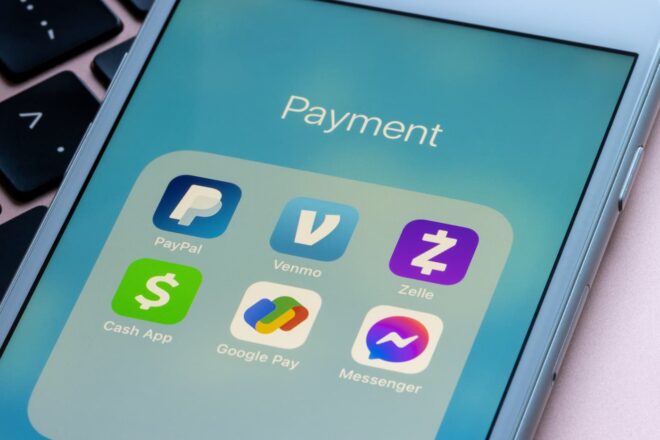Google Wallet vs. Google Pay: What’s different?
Editorial Team
7 min read
In July 2022, Google released a revised version of Google WalletTM, which had originally launched to mixed reviews back in 2011.1 This new release overcomes some of the core challenges associated with the first iteration of the company’s virtual wallet. In many ways, it now shares much in common with the tech giant’s existing popular mobile app – Google PayTM – that now works alongside Google Wallet to help users manage their money and finances.
This article explores these complementary payment technologies – highlighting their differences and similarities.
What is Google Wallet in 2022 and beyond?
Whereas Google Pay primarily exists for peer-to-peer (P2P) and in-store payments, the newly released Google Wallet is being billed as an integrated online wallet for all your:
- Payment cards
- Loyalty cards
- Boarding passes
- Vaccination cards
- Electronic car keys
- Driver’s license and ID cards
- Event tickets
Just as with previous versions, the new Google Wallet supports contactless payments at the point of sale, eCommerce transactions online, and P2P payments. Google Wallet has replaced Google Pay in nearly 40 countries around the globe.2 For U.S. users, it is the primary payment service on Android, however Google Pay can be used, but primarily as a P2P service.
To understand why Google is investing so heavily in this newly updated payment app, it helps to look at the histories of Google Wallet and Google Pay.
A brief overview of the original Google Wallet (2011)
There wasn’t a whole lot of fanfare surrounding the 2011 launch of Google Wallet, which was one of the first major mobile payment technologies that allowed users to shop in stores or send money to friends and family members.3
For starters, PayPal had already cornered the peer-to-peer (P2P) payment market, leaving little room for Google’s service. And mobile payments were still a relatively untested technology throughout the retail industry at the time. Adoption of this virtual wallet was quite slow. Part of this stemmed from the complicated process involved when shopping in person:
- Users had to download a dedicated app and upload their credit card credentials in advance.
- At the checkout counter, users had to unlock their smartphones and enter a security PIN.
- They then had to tap or wave their devices across a reader to authorize payment.
All of this assumed the merchant had a near field communication (NFC) terminal that could accept contactless payments from smart devices. In 2011, very few retailers did.4
This changed when Apple introduced its own mobile payment technology — Apple Pay® — in 2014.5
The core features were essentially the same as the original Google Wallet, but Apple established merchant relationships before introducing its new service. By bringing more retailers on board, the company was able to pave the way for faster and wider consumer-side adoption.
Better still, Apple Pay came pre-integrated with later versions of the iPhone® and iPad®. This prompted Google to respond with Android Pay™.6
Please share your contact information
to access our premium content.
Thank you for sharing your contact information.
Download NowThe rise of Android Pay – Google Pay’s predecessor
Android Pay wasn’t an innovative breakthrough in mobile payment technology, but this new service was able to ride on Apple’s coattails now that more vendors were set up for NFC payments.
Plus, users didn’t have to download a dedicated app since Android Pay came automatically integrated with all later Android devices.
But Google now had a branding problem:
- It offered Google Wallet — mostly for P2P payments.
- It offered Android Pay — for online and retail shopping
Enough users were confused by these somewhat overlapping payment technologies that Google decided to bring both services under one unified platform.
In 2018, the company launched Google Pay.7 Eliminating the confusion surrounding Android Pay vs. Google Pay as well as Google Pay vs. Google Wallet has been one of the company’s primary concerns since the launch of the platform.
How is the new Google Wallet different from Google Pay and Android Pay?
The key difference between Google Pay and Google Wallet is that:
- Google Wallet is a unified platform for all of one’s digital cards, IDs, payments, and passes (similar to a traditional wallet)
- Google Pay provides a unified platform for making payments to businesses as well as individuals
Google Pay is the cross-platform payment technology behind transactions that works on any device, browser, or operating system. It’s automatically enabled with Google Wallet and can be integrated into payment systems online and in-store. Android Pay has been completely phased out.
The updated Google Wallet platform will function as one consolidated medium for users to manage all digital cards and payments.
What’s in the Google Wallet app?
The new Google Wallet app allows users to upload multiple credit, debit, gift cards, and bank account numbers to their accounts, and they can manage all of this payment information through a single Google-tied login.
Along with storing payment cards, users can also manage digital IDs, event tickets, keys, proof of vaccinations, and more.
In addition, Google Wallet delivers some advanced security methods such as:
- 2-step verification
- Find My Phone
- Remote data erase
- Encrypted payment codes
- Privacy controls
What’s in the Google Pay app?
The Google Pay app will exist alongside Google Wallet in the United States. Once users download the Google Pay app, they will find it divided into three tabs:
- Explore: See offers from online and in-store retailers, along with restaurants near you
- Pay: Use tap to pay, or send or request money from contacts
- Insights: Add accounts, track purchases, and gain insights into spending habits
The benefits of Google Wallet solutions – for customers and merchants
The motivation behind this rebranding is clear: Google wanted to eliminate confusion. By consolidating accessibility into the unified Google Wallet app, the company has moved closer to a universal payment option that works across the board.
However, customers also benefit from this move:
- You might occasionally forget your keys or wallet, but very few shoppers forget their phones. This means getting stranded or locked out of your vehicle becomes less likely, since you’ll always have your keys and payment account info with you.
- NFC payments can be 10 times faster8 than those made with credit cards or even cash. This means shorter retail lines and fewer hassles.
Merchants also benefit from accepting Google Pay:
- Offering a new payment option is a good way to attract new customers.
- Shorter and faster lines can help you generate more sales per hour.
Getting started with Google Wallet & Google Pay
If you’re already using Google Pay as a consumer, very little will change about your day-to-day experience. You can still:
- Pay in-store
- Shop online or within apps
- Send money to friends
How do you sign up for Google Pay as a merchant? If you already accept contactless payments at your brick-and-mortar store, you’re technically set up for Google Pay. If you operate an online store, learn how to set up the Google Pay integration here.
Understanding your options
The new Google Wallet joins an increasing list of mobile and contactless payment platforms in the marketplace. In addition to Apple Pay, Samsung Pay, and other recognizable names, numerous other companies are jumping into the fray headfirst. No matter what type of business you’re in, it’s important for you to know the four types of mobile payment systems and what they can do for you and your customers.
To learn more about accepting Google Pay or Google Wallet with your merchant account, contact a Clover Business Consultant today.
CONTACT SALES1 “Google Wallet rolls out to users, will live alongside Google Pay in the US,” ARS Technica, 18 July 2022
2 “Google Pay vs. Google Wallet: What’s the difference?” CNET, 26 July 2022
3 “How many Google Wallet users are there? Google won’t say – but we can,” The Guardian, 25 September 2014
4 “Your mobile phone is becoming your wallet,” CNN Money, 19 January 2011
5 “Apple Announces Apple Pay,” Apple, 9 September 2014
6 “Google launches Android Pay to take over where Google Wallet failed,” The Guardian, 2 March 2015
7 “Google Launches Google Pay, Its Answer to Apple Pay,” Fortune, 20 February 2018
8 “MasterCard study shows consumers moving to contactless payments for everyday purchases as they seek cleaner, touch-free options,” Mastercard, 30 April 2020
Related Posts
How to increase ticket size at your restaurant
5 payment technology trends to watch in 2024
Popular Topics
Stay in touch
Sign up and learn more about Clover.
Thank you for your subscription!
More posts about starting a small business
eBook






